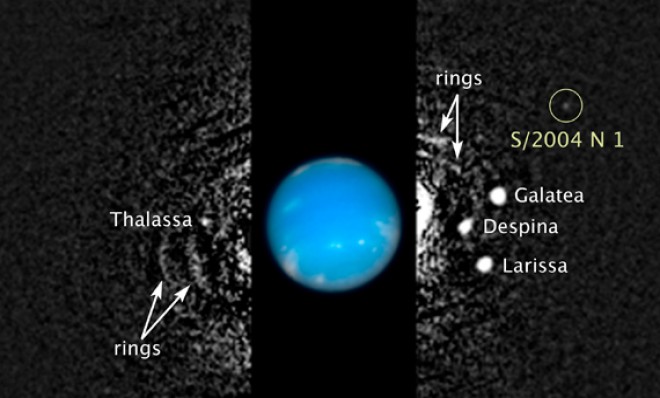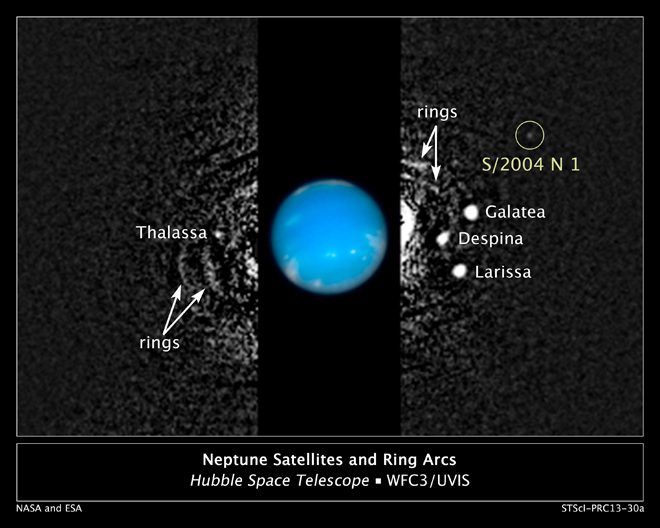Why we only just discovered Neptune's 14th moon
NASA's Hubble has spotted an unusual bright spot circling the giant planet


Even with NASA's powerful (if temporarily hobbled) new instruments like the Kepler Space Telescope allowing us to peer farther into the universe's distant corners at exotic new worlds, it's the trusty old Hubble, launched in 1990, that is proving there's still plenty of undiscovered stuff left in our own solar system.
Take Neptune, the blue-green giant nestled between Uranus and Pluto. Mark Showalter of the SETI institute in Mountain View, Calif., recently discovered a brand-new, previously unseen moon circling the planet, making it Neptune's 14th to date.
It's not very big: S/2004 N 1 (yes, it's a mouthful) is just 12 miles across, or about the size of a modest metropolitan city. Its unassuming size may explain why we had a hard time spotting it in the first place; it even escaped the eye of NASA's Voyager 2 spacecraft, which flew right past it in 1989.
The Week
Escape your echo chamber. Get the facts behind the news, plus analysis from multiple perspectives.

Sign up for The Week's Free Newsletters
From our morning news briefing to a weekly Good News Newsletter, get the best of The Week delivered directly to your inbox.
From our morning news briefing to a weekly Good News Newsletter, get the best of The Week delivered directly to your inbox.
Showalter himself barely noticed the moon — which is 100 million times fainter than the faintest star in the night sky we can see with our naked eye — as he was studying Hubble images of Neptune's arcs on July 1 of this year.
Hidden in Neptune's rings, Showalter noticed an unusually bright dot about 65,400 miles away from the planet. To figure out exactly what it was he had to track it, Showalter pored over 150 archival Neptune photographs. "The moons ... orbit very quickly, so we had to devise a way to follow their motion in order to bring out the details of the system," he said. "It's the same reason a sports photographer tracks a running athlete — the athlete stays in focus, but the background blurs."
In several photographs the white dot resurfaced, again and again and again.
By connecting the dots, Showalter could trace the new moon's orbital path as it circled Neptune. In the end, each revolution was found to take about 23 hours.
A free daily email with the biggest news stories of the day – and the best features from TheWeek.com
It just goes to show you that the Hubble, even after a long two decades, is still capable of showing us a new thing or two.
-
 Nursing is no longer considered a professional degree by the Department of Education
Nursing is no longer considered a professional degree by the Department of EducationThe Explainer An already strained industry is hit with another blow
-
 6 gripping museum exhibitions to view this winter
6 gripping museum exhibitions to view this winterThe Week Recommends Discover the real Grandma Moses and Frida Kahlo
-
 Why do Republicans fear swing state immigration raids in North Carolina?
Why do Republicans fear swing state immigration raids in North Carolina?Today’s Big Question Trump’s aggressive enforcement sparks backlash worries